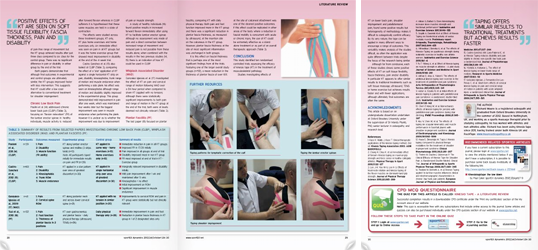What is the evidence for kinesio tape?
As published in SportEX Dynamics October 2012.
What is the current evidence for the use of kinesio tape? A Literature Review
by Richard Moore BSc(Hons) Osteopathy
The popularity of kinesiotaping has skyrocketed in recent months due to a high profile presence at the London 2012 Olympics and European Football Championships, with widespread coverage in mainstream media. Much attention has been paid to the athletes wearing the tape and the claims made by the manufacturers with very little evidence being given as to its efficacy. It is the aim of this article to identify the current body of evidence for the use of kinesio taping in the treatment of musculoskeletal conditions.


Conclusion
This study identified ten randomised controlled trials assessing the efficacy of kinesiotape (KT) in the treatment of musculoskeletal pathology.
Studies investigating effects on lower back pain, shoulder impingement and patello-femoral pain, found some positive results but heterogeneity of methodology makes it difficult to categorically confirm efficacy. By its very nature, the tape can be applied in many different ways to encourage a range of outcomes. This flexibility makes analysis of the studies difficult, as often the application was quite different between trials despite the focus of the research being similar.
Although far from conclusive, each of these studies shows some positive effects of KT on soft tissue flexibility, fascia thickness, pain and/or disability. In particular KT appears to offer similar results to traditional treatments such as soft tissue massage, ultrasound, TENS or home exercise but achieves results faster and with fewer applications, although ultimately final outcomes are often the same.
Download the full text here: what is the evidence for kinesio tape (2.3mb PDF)


